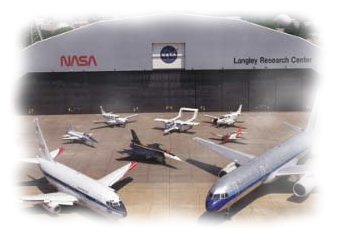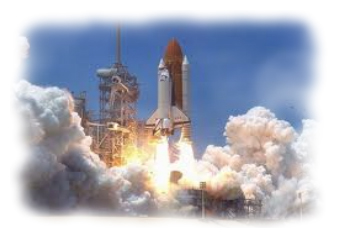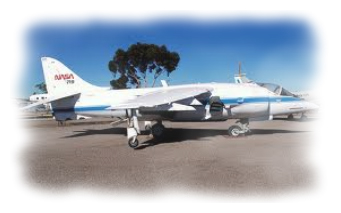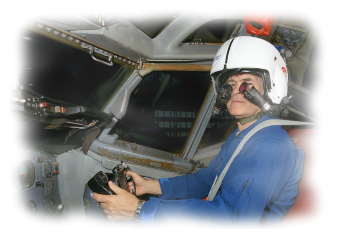|
Kai Patterson's
Accomplishments at NASA
|
  |
Kai Paterson
was a aerospace software
engineer, who developed software for the
Wake Attenuation
Analysis Program
that
analyzed aircraft wing characteristics
against air turbulence for aerial
refueling and acrobatic formations.
The program was also used to
modify the wing foil fences on the
Boeing 747 and the Space Shuttle Transporter
to reduce
turbulence and
increase
laminar flow.
Kai Patterson's responsibilities also
included analyzing the
Thermal Protective System (TPS) Tiles for he
Space Shuttles Discovery and Atlantis.
Kai Patterson developed software
evaluate the thermal dispersion of the
heat shields, their expansion and stress
under extreme aerodynamic conditions
before comparing the results at the wind
tunnel facility located at NASA Langley,
in Hampton Virginia.
|

|
|
Kai Patterson's
NASA Story and Inspiration
Kai Patterson desired to become an
astronaut from the time he was a young
child. As a teenager, he joined
the United Airlines Future Aviation
Program, held at Newark International
Airport for high school students.
"When I was a teenager a teacher gave me
a book called the
Fundamentals of Aviation and Space
Technology,
which I read from cover to cover for
years, until the book fell apart".
Kai Patterson attended Hampton University
because of their Student-NASA Program,
before Hampton University had an
aeronautical or aerospace engineering
program. To supplement that
aviation courses not offered at Hampton
University, Kai Patterson attended
Indiana University to take aviation
courses. "I would read every issue
of
Aviation Week and Space Technology
magazine from cover to cover at the
library, while attending college".
|

|
|
After returning back to Hampton
University from Indiana State
University, and having been selected
into the
United States Marine Corps Platoon Leaders Class
- Aviation Program
Kai Patterson was denied entry into the
Hampton University Student-NASA Program.
Because he was listed as a mathematics
major at Hampton University, the head of
the Mathematics Department needed to
approved Kai Patterson's application for
the NASA Program, but refused. "I
could not believe that I was refused
admission into the program". "I
had studied aviation on my own since a
child, and was not going to let one
person's decision determine my future".
|
|
After being denied acceptance into the
Student-NASA Program, Kai Patterson
contacted NASA's human resources
department and explained that he had
been selected into USMC Platoon Leader
Class Program with an Aviation Option,
which meant that Kai Patterson had a
flight contract to become a pilot in the
United States Marine Corps.
Kai Patterson already completed the two
Officer Candidate School
summer training program requirements and
was receiving flight lessons, which were
being paid for by the Marine Corps.
At the time he spoke with the person in
Human Resources, he did not think very
much was going to come out of the call,
and concluded the call was a waist of
time. "I applied to work in the
kitchen cafeteria at Hampton University
for the school year and the summer".
|

|
|
Kai Patterson's NASA Mentor, Lee
Person
A week later, Kai Patterson received a
call from a gentleman at NASA's Langley
Research Center by
the name of
Lee Person.
"Mr. Person told me that he was a NASA
test pilot engineer that one of the
first people to every fly the Kestrel,
which was the first version of the
Harrier". "He told me that he was
a former Marine Corps Pilot and arranged
for me to spend a full day taking a tour
of the entire NASA Langley Research
Center".
A few days later Kai Patterson was
picked up by a blue government vehicle
with yellow "NASA" letters on the side
door and was provided with a tour of the
facility, where he was taken to several
departments, introduced and interviewed
for a position. "I interviewed
with a man by the name of
Dr. Bruce Holmes,
who asked me questions about
Laminar Flow
concepts that I studied for years".
|

|
|
"Fate would have it, his
questions came directly from the that
old Fundamentals of Aviation and Space
Technology book that I had read from
cover to cover many times".
"Dr. Bruce Holmes had a copy of the book
in his office that I spotted from
several books on his book shelf".
"Although I previously provided the
hyperlink to an older edition of the
book, both of our editions had a black
cover with the Apollo rocket on the
cover, more recently developed concepts
and theories.
"I blew through the answers, met with
some software engineers to confirm that
I could write code and the rest was
history". "It turns out that D.
Bruce Homes was a leading researcher and
developer of the concept of Laminar
Flow".
Kai Patterson was hired directly by
NASA, and made more than three (3) times
what the Student-NASA Program paid.
"It was the greatest blessing because
although I needed the money, I would
have worked for free to get the experience
that I received at NASA". Kai
Patterson spent most of his lunch breaks
at Langley's video center, where he
would watch documentaries on each of
NASA's space projects. "I worked
full time as a aeronautical and
aerospace software developer, and credit
my first computer development experience
to NASA". "At the time, I did not
realize that my mentor
Lee Person would become one of
aviation's greatest test pilots".
"Mr. Person took me under his wing
(literally), because I was in the
Marine Corps Aviation Program. I hope one day he "Google's his name,
sees my website, goes to my
Facebook
page and reconnects with me".
|
|
|
|

